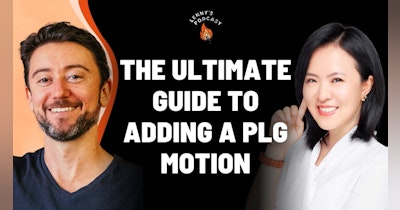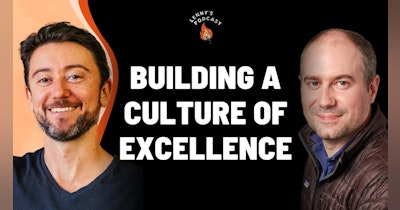Shreyas Doshi has managed product at Google, Twitter, Yahoo, and Stripe—where he joined as its fourth product manager, later becoming Stripe’s first PM manager and helping define and grow its PM function from about 5 to more than 50 people. He shares his words of wisdom on Twitter.
Shreyas was born in Mumbai, India, and moved to the U.S. for graduate studies at age 21. He started his career as an engineer before transitioning to product management, and thought about teaching French as an alternative career.
You can also check the episode transcripts and Shreyas’ references.
Key takeaways
- At Google, Shreyas learned the power of thinking big and pursuing large opportunities, which is their modus operandi.
- Twitter’s stickiness comes from combining network effects with core product differentiation, enabling it to stay in power despite challenges.
- Combining high energy, sound judgment, low ego, and small teams led to magic at Stripe, where he saw this combination more than at any other place he had worked.
- Pre-mortems: Imagine a project has failed and work backward to identify potential issues and mitigate them beforehand; this creates psychological safety and a shared vocabulary, and helps avoid problematic situations down the road.
- The three levels of product work are impact, execution, and optics. Most conflicts arise when team members are focused on different things and talking from different levels, and the trick is to figure out at which level you ought to communicate with a certain stakeholder.
- “Most execution problems in high-performing environments are actually strategy problems, interpersonal problems, or cultural problems.”
Pre-mortems and how they’re useful ▶
- Pre-mortems are a proactive approach to identifying potential issues in a project before they happen, unlike postmortems, which analyze issues after they have occurred. A pre-mortem meeting starts with imagining a hypothetical failed outcome and then working backward to identify what could have contributed to that failure.
- Pre-mortems provide psychological safety for team members to openly discuss their concerns without being seen as negative or pessimistic. Concerns can be:
🐯 Tigers: A clear threat that will hurt the team if they don’t do something about it.
📃 Paper tigers: An ostensible threat that you are personally not worried about (but others might be).
🐘 Elephants: The thing that you’re concerned the team is not talking about.
- To conduct a pre-mortem, invite people from every function involved in the project, and alternate between quiet time for individual reflections and group discussions. See this Coda template.
Shreyas’s famous LNO framework to become productive
I often find that a large part of early/mid-career PMs' work stress is due to not recognizing this: pic.twitter.com/m6xkKyKxYK— Shreyas Doshi (@shreyas) February 2, 2020
- The LNO framework is a prioritization method for tasks, focusing on Leverage tasks, Neutral tasks, and Overhead tasks. Leverage tasks are high-impact tasks that yield 10x or 100x returns in terms of impact for the effort put in. Neutral tasks provide roughly equal returns to the effort put in, while Overhead tasks yield less impact than the effort put in.
- LNO helped Shreyas deal with copious amounts of stress and increasing workload at Google. Examples of Leverage tasks include writing a PRD for an important feature and aligning two teams for greater impact. To tackle Leverage tasks, start by doing “placebo productivity” tasks. This means intentionally doing Neutral and Overhead tasks to overcome the initial hurdle of getting started. Also consider changing the location you work from (go to a cafe!).
The 3 levels of product work ▶
I often find that a large part of early/mid-career PMs' work stress is due to not recognizing this: pic.twitter.com/m6xkKyKxYK— Shreyas Doshi (@shreyas) February 2, 2020
- Conflicts often arise when team members are not aligned on which level to focus on. The CEO usually thinks at the impact level, while PMs tend to focus on the execution level.
- Optics is important for creating awareness, energy, and excitement around the work being done, but should not become the main goal.
Why execution problems are really not execution problems ▶
- Execution problems in high-performing environments are often not execution problems but strategy, interpersonal, or cultural problems. A common example: Team misalignment is often viewed as an execution problem, but it could be due to a lack of clear strategy, cultural issues, or interpersonal conflicts between the leaders.
- While there are genuine execution problems, like infrastructure issues or skill gaps, in fast-growing organizations other factors are often overlooked.
- A sign that a problem might not be an execution issue is when a band-aid solution is applied but the problem persists or recurs.
Why ROI thinking is detrimental to product planning ▶
When in a high leverage role:
— Shreyas Doshi (@shreyas) June 29, 2021
Stop doing work that simply provides a positive return on investment.
Start focusing on work that minimizes opportunity cost.
- Shreyas learned this idea from Patrick Collison, the CEO of Stripe. In high-leverage roles, there are hundreds of things that can provide positive ROI, but focusing on them can cause teams to miss bigger opportunities. Shifting from an ROI mindset to minimizing opportunity cost helps prioritize time effectively.
- In the ROI approach, you prioritize low-hanging fruit and quick wins, which are popular but soon end up filling your plate. To minimize opportunity cost, you to move from “Is this a good use of my time?” to “Is this the best use of my time?” This is subtle but profound.
- Another tactic: Set clarity for the allocation of time for incremental features vs. big new initiatives vs. stability/infrastructure for your team if you are a manager, e.g. Google had 70% allocated to search and ads, 20% to apps (like Gmail), and 10% to big bets.
- High agency is what makes PMs successful. It means (a) an ownership mindset, (b) creative execution, and (c) resilience.
This is a human edited summary of the podcast episode with Shreyas, by Gaurav Chandrashekar (@cggaurav, productscale.xyz). To listen to the full episode, go here.








